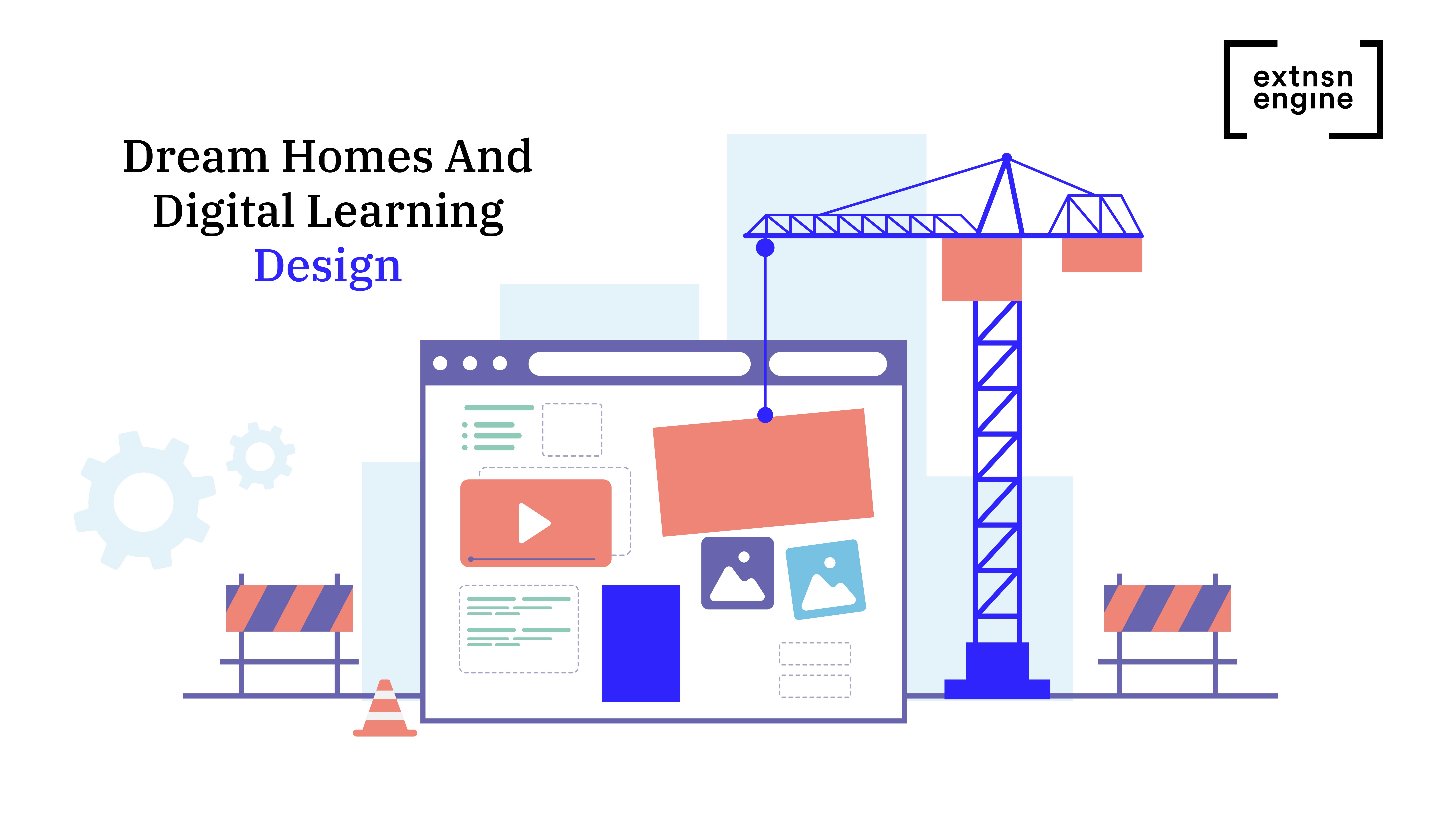Imagine having to design a new home. You sketch a floor plan. You pick gorgeous paint colors. You can already see yourself warm and cozy inside your new house.
But you forgot the bathroom and have three square feet left for the kitchen.
Now, think about launching a digital learning platform. Can you draw a diagram, let alone envision the online experience? Can you plan your platform or even consider what you might accidentally leave out?
Whether it’s a physical house or a digital learning platform, important people are going to spend a lot of time there. And forgetting something is costly! You might not be hanging drywall or writing code, but you can start envisioning the perfect environment.
When designing your ideal learning platform, remember these lessons from building homes.
List your "must-haves"
If you enjoy watching movies with the family, you probably want a den. If you like to cook, get that big kitchen!
Like the rooms in your dream home, the features on your learning platform reflect what learners want to do. Does your audience enjoy lively discussions? Then your platform needs to facilitate conversations. Do they want to network and connect with fellow learners? Think about what features will build that sense of community.
For example, take a look at how APPR’s online community enables program participants to collaborate across the country.
Make people feel welcome
Log cabin or industrial loft? Rustic charm or big-city chic? Design is a crucial factor in how people feel in their home. The same goes for the user interface (UI) of your platform.
Fun and warm? Sleek and modern? How should your learners feel when they’re online? What will make them look forward to coming back? Personalized design choices based on your audience will make them feel welcome and will enhance the learning experience.
Don’t forget the “flow” of your platform: Sound user experience (UX) design allows easier navigation and a smoother learning process. How many screens are they clicking through to reach the content they need?
Remember that there is no single “type” of learner. Consider accessibility throughout the design process.
Start with a solid structure
Your new home needs a sturdy frame; likewise, your new platform needs the right software architecture, tech stack, and integrations. These fundamentals determine the longevity of the platform.
Eventually, you’ll want to add new features. You wouldn’t want to rip out pipes to install a new sink, and you shouldn’t have to rebuild your platform to integrate a new app! Be sure you build with flexibility and adaptability in mind.
Make your house a home
You want a dream home, and learners want bespoke digital experiences: custom learning that engages them through high-quality content tailored to their learning style and goals.
You’re not just making a website. You’re creating a learning experience. Ask yourself:
- What’s on the learner’s wish list?
- What type of UX and UI will make them feel “at home”?
Keep learning
Six questions to help you decide whether to buy off-the-shelf learning software or build a custom learning solution — a decision that can be fraught with anxiety.
Off-the-Shelf or Custom Learning Platform? Six Questions To Help You Decide

